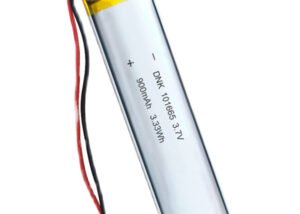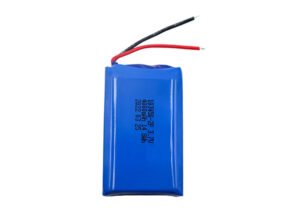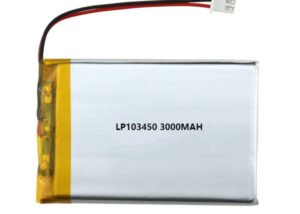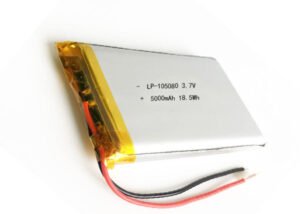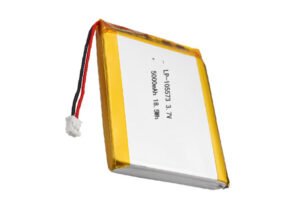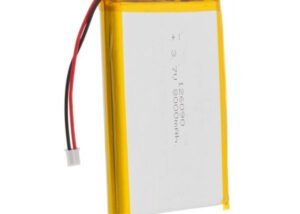Lithium Polymer Battery in Handy Terminal
Lithium polymer battery, also known as LiPo battery, is a rechargeable battery that is commonly used in handy terminals such as smartphones, tablets, and portable gaming devices. It is a type of lithium-ion battery that uses a polymer electrolyte instead of a liquid electrolyte, which makes it more lightweight and compact. In recent years, the importance of lithium polymer battery in handy terminals has grown significantly due to its advantages over other battery types.
Advantages of Lithium Polymer Battery in Handy Terminals
One of the main advantages of lithium polymer battery in handy terminals is its lightweight and compact design. This allows for the development of thinner and lighter devices, making them more portable and convenient to use. Additionally, lithium polymer batteries have a high energy density, which means they can store more energy in a smaller space. This results in longer battery life for handy terminals, allowing users to use their devices for longer periods without having to recharge them.
Another advantage of lithium polymer battery is its low self-discharge rate. This means that the battery can retain its charge for longer periods, even when not in use. Moreover, lithium polymer batteries have a long lifespan, which means they can be recharged and used for several years before needing to be replaced. Lastly, lithium polymer batteries have a fast charging capability, which allows users to quickly recharge their devices and get back to using them.
Applications of lithium polymer battery in handy terminals
Lithium polymer batteries are commonly used in a variety of handy terminals, including smartphones, tablets, portable gaming devices, GPS devices, and digital cameras. In smartphones, lithium polymer batteries are used to power the device and provide long-lasting battery life. Tablets also use lithium polymer batteries to power their larger screens and provide extended battery life. Portable gaming devices, such as the Nintendo Switch, use lithium polymer batteries to provide hours of gaming on the go. GPS devices use lithium polymer batteries to power their location tracking features, while digital cameras use them to power their high-resolution displays and image sensors.
Challenges of lithium polymer battery in handy terminals
Despite its advantages, lithium polymer battery also poses several challenges in handy terminals. One of the main challenges is the risk of overheating and explosion. This can happen when the battery is exposed to extreme temperatures or when it is damaged due to physical impact. Another challenge of lithium polymer battery is its limited capacity compared to other battery types. This means that handy terminals that use lithium polymer batteries may not have as much battery life as those that use other battery types. Lastly, lithium polymer batteries can be more expensive than other battery types, which can increase the cost of manufacturing and purchasing handy terminals.
Maintenance and Safety Tips
To ensure the safe and proper use of lithium polymer battery in handy terminals, it is important to follow some maintenance and safety tips.
- Proper charging and discharging of the battery is essential to maintain its lifespan and prevent overheating and explosion.
- Avoiding extreme temperatures, such as leaving the device in a hot car or exposing it to direct sunlight, can also help prevent battery damage.
- Regular inspection and maintenance of the battery, such as checking for physical damage or swelling, can help identify potential issues before they become a problem.
- Lastly, safe storage and disposal of lithium polymer batteries is important to prevent environmental damage and potential hazards.
Future Developments and Trends in Lipo Battery Technology for Handy Terminals
As technology continues to evolve, lithium polymer battery technology is also expected to improve. Advancements in energy density and capacity can lead to even longer battery life for handy terminals, while improved safety features can reduce the risk of overheating and explosion. Additionally, integration with wireless charging technology can make charging more convenient and efficient for users.
In all, Lithium polymer battery is an important component of handy terminals due to its advantages over other battery types. Its lightweight and compact design, high energy density, low self-discharge rate, long lifespan, and fast charging capability make it a popular choice for smartphones, tablets, portable gaming devices, GPS devices, and digital cameras. However, it is important to be aware of the challenges and potential risks of lithium polymer battery and follow proper maintenance and safety tips to ensure safe and proper use. With future developments and trends in lithium polymer battery technology, we can expect even more improvements in the performance and safety of handy terminals.


